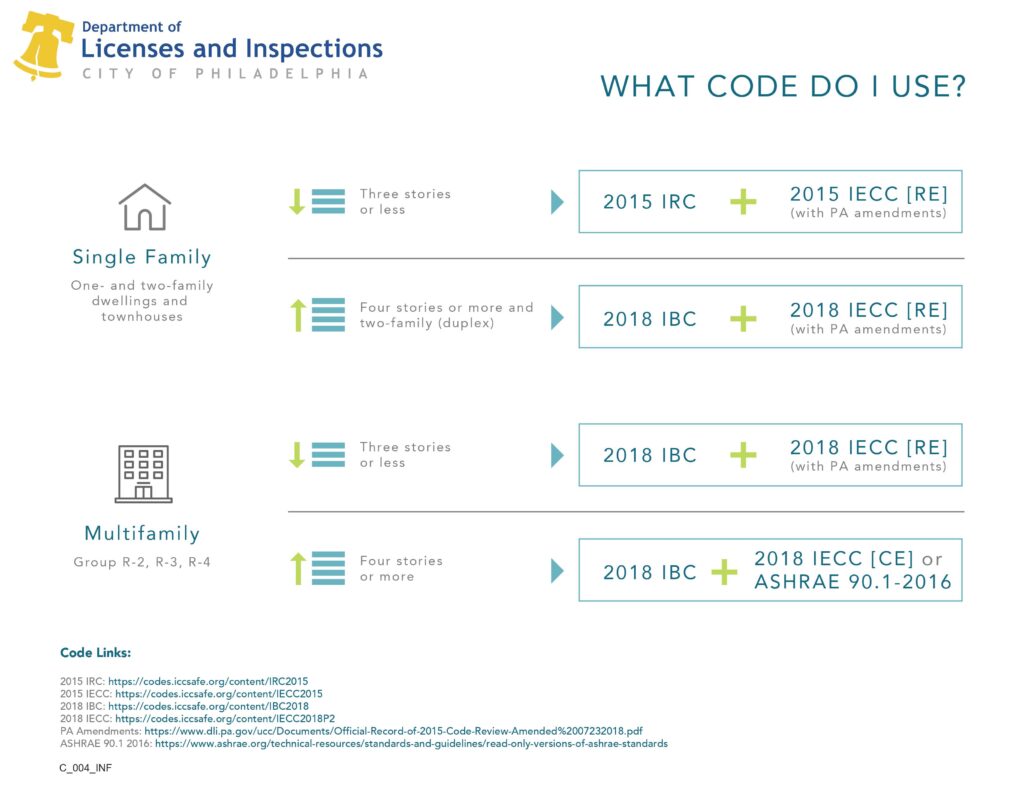What buildings fall under the regulations for 2015 IECC?
The vast majority of homes in Pennsylvania live in areas that have adopted the 2015 IECC. However, it’s best practice to make sure by consulting with a local Pennsylvania inspector who is well versed in the regulations and willing to assist you.
2015 IECC only applies to residential buildings, which excludes hotels, motels, and boarding houses. In other words, it applies to most homeowners. But here’s more information on the specifics.
New buildings
The code organizes building types by R groups. For new buildings, 2015 IECC applies to R-2, R-3, and R-4. Here’s what that means.
Group R-2:
- Buildings with a shared exit
- Permanent occupancy
- Under three bedrooms
Group R-3:
- Permanent occupancy
- Individual exits
Group R-4:
- 5-16 occupants
- Supervised care
- Independent occupants
The key takeaways for what falls under the new building requirements for 2015 IECC is that it mainly applies to homes with permanent occupancy of a limited size. If you are unsure whether your building falls under these codes, contact your local Pennsylvania energy auditor or consult the 2015 IECC guidelines.
Existing buildings
Existing buildings may be expected to follow the 2015 IECC guidelines if significant additions or renovations are to be made. If your home was contracted or built before or during October 2018, you will need to comply with these regulations. The purpose of these guidelines is to make newer homes more energy-efficient, which usually requires the cooperation of builders, HVAC contractors, electricians, etc. This poses some obvious difficulties for older homes which is why they may be excluded from these regulations.
If you are making additions to your home or are in the process of building one, you will need to pass a blower door test and duct leakage test. Click here to schedule your test from a qualified specialist and make sure your home complies with your local regulations.
